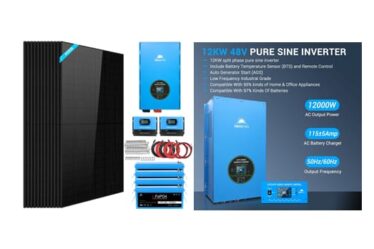
Sponsored Product Ads are now a key to success for those sellers who are looking for advertising on Amazon India. Through these ads, products can be made visible to individuals searching for the same or related products, and this is an ideal opportunity to boost visibility and drive conversions. Best use of them, though, is more than just a matter of flipping an ad switch. With rising competition and ever-changing algorithms, sellers must rely on data-driven strategies and act with agility.
Sponsored Product Blog Post Ads
Sponsored Product Ads are pay-per-click ads that advertise single listings. They appear on product detail pages and search pages as users search or browse. Advertisements are based on keyword bids by sellers and bids fighting for positions in the top area.
Customisation is important where consumer behaviour never imitates the Western markets, like India. Indian consumers are price-conscious as well as sensitive towards value-driven content and product descriptions. Therefore, advertisers need to make sure that products being advertised are optimised not only in terms of visibility but also in terms of content.
Laying the Foundation: Optimise Product Listings
No budget can save a badly optimised product page. First, make sure titles, bullet points, and descriptions are not just keyword-heavy but also readable. Add high-quality images, videos if available, and relevant certificates or warranties.
Also, ratings and reviews have a major influence on click-through rates (CTR) and conversions. A Sponsored Product Ad can win the impression, but only a reliable product page wins the sale.
Keyword Targeting: Balance Broad and Specific
Selecting the appropriate keywords continues to be at the centre of any advertising campaign. For Amazon India, a combination of generic and long-tail keywords is recommended. Broad keywords such as “wireless earphones” are more traffic-driven but highly competitive. Specific keywords such as “Bluetooth earphones under 1000” can help reach intended buyers.
Try between match types—broad, phrase, and exact. Broad match provides exposure, and exact match provides accuracy. Check the performance periodically and rebid accordingly.
Utilise Automatic and Manual Campaigns Side by Side
Automatic campaigns assist in finding relevant keywords you may have overlooked. Amazon’s algorithm serves to match your advert with search queries, showing customer behaviour insights. After you have found effective keywords, duplicate them into manual campaigns for more control.
The two-campaign strategy provides for optimisation. Automatic campaigns assist with searching, while manual campaigns optimise. Over time, the strategy assists in eliminating wasteful expenditure and improving returns.
Track Important Metrics Regularly
Ongoing monitoring is crucial for campaigns to succeed. The most important indicators are:
- ACoS (Advertising Cost of Sales): Helps establish whether the campaign is profitable.
- CTR (Click-Through Rate): Indicates the ad’s relevance.
- CVR (Conversion Rate): Reveals how often clicks lead to sales.
Low CTR but high impressions could be an indicator of irrelevant targeting. High CVR but high ACoS may indicate overspent bids. Sellers are able to better adapt their strategy and maximise optimal budget usage by knowing these numbers.
Budget Allocation: Think Beyond Daily Spend
The majority of sellers focus on daily budgets without evaluating campaign-level performance. Budget for best-performing campaigns and halt or reduce spending on underperformers. Use dayparting when necessary to find peak buying times and schedule your campaigns accordingly.
Though shopping sprees in the Indian context happen during festivals like Diwali and Raksha Bandhan, one needs to adjust and spend to such seasonality for maximum impact.
Take Advantage of Amazon Digital Shelf Analytics
Amazon digital shelf analytics are essential to compete. This includes tracking how your products are positioned in search, how often they sell out, if pricing is consistent across the platforms, and how they compete against others.
It provides details on visibility, discoverability, and performance, three of which are essential to Sponsored Ads. An amazing product with high visibility but unpredictable stock or price will never perform, regardless of ad spend.
Data analysis on your digital shelf helps pick out blind spots in your campaigns. Are your competitors taking over some keywords? Are your products not showing up in top-of-page placements? Digital shelf analytics can provide answers to these questions.
Test and Refine: A/B Testing
Sponsored ads live and breathe iteration. A/B testing lets you experiment with creatives, targeting, and bids. For example, test whether a lifestyle photo works better than a studio photo. See if bidding up on weekends boosts conversions.
Small experiments repeated over time result in strong insights. These can substantially enhance campaign effectiveness and product performance.
Keep Current with Platform Developments
Amazon frequently updates its algorithms, ad formats, and policies. Stay up to date. Join forums for sellers, listen to webinars, or speak with specialists. Understanding these changes will keep your campaigns on track and help you make the most of the latest features.
For instance, product targeting has just recently been introduced by Amazon for Sponsored Product campaigns. This enables advertisers to target certain ASINs or categories, which presents new opportunities for brand visibility.
Paxcom’s Strategic Ad Optimisation Role
Interpreting and reacting to performance data can be daunting in this ever-changing environment. Solutions such as Paxcom’s Kinator come into play here. Kinator provides sophisticated Amazon digital shelf analytics that generate real-time visibility into your product’s performance by category.
It determines what your product looks like to buyers, identifies stockouts, pricing discrepancies, and competitor activity. These data provide data-driven decision-making for your Sponsored Product ads. Paxcom analytics not only shows gaps but also opportunity areas so that sellers can remain visible and competitive.
Kinator’s integration with Amazon enables simplified listing, keyword reporting, and performance dashboards, making it easier to identify high-converting keywords and listings that need optimisation. Such integration is essential for effectively scaling paid advertising on Amazon India.
Conclusion
Amazon India Sponsored Product Ads are time-consuming and necessitate creativity, data analysis, and endless optimisation. Start with optimising your listings and choosing the right keywords that best suit. Apply automatic and manual campaigns in looking for and executing search terms. Closely monitor your campaigns and adjust them according to performance metrics
Employing Amazon digital shelf analytics in your process keeps you in the know. Paxcom’s Kinator, along with others, provides visibility for your digital shelf performance, putting you one step ahead of the competition in an overpopulated market.
In the end, advertising on Amazon India is about more than spent ad dollars. It takes an integrated strategy whereby content, context, and commerce come together to place your product in front of the shopper at the point of need.


